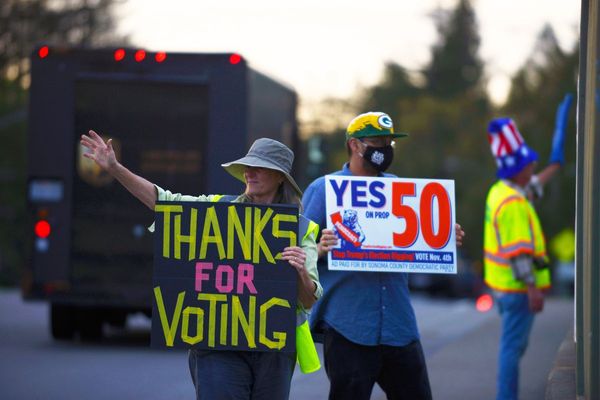
An "interstellar shout" from Canberra, sent across almost 20 billion kilometres, has restored contact with NASA's Voyager 2 spacecraft.
NASA confirmed it had restored communications with the space probe, two weeks after it stopped communicating.
"With a one-way light time of 18.5 hours for the command to reach Voyager, it took 37 hours for mission controllers to learn whether the command worked," NASA said.
Controllers had sent the wrong command to the 46-year-old spacecraft and tilted its antenna away from Earth.
Glen Nagle, from the CSIRO-operated NASA tracking station, said there was absolute jubilation, with cheers and high-fives, in the control room when the communication link was restored.
"We had to wait that 37-hour round trip time to yesterday afternoon at 2.29pm, pointed to where we know Voyager is, with the expectation we might get a signal and yeah, it came in and loud and clear," he said.
Mr Nagle said the odds of the shout restoring communications had actually been low.
"Even talking to the mission team over at NASA, they sort of said, 'Well, you know, this is a shot in the dark but we tried something like this before, let's give it a go and we'll see if this 46-year-old spacecraft will respond," he said.
"And everybody thought, 'Oh well, we'll give it a try'. But it worked and that was fantastic."
The arrows on the road say it all. ⬅️➡️ Two-way communications have been restored with #Voyager2
— CanberraDSN 📡 (@CanberraDSN) August 4, 2023
The good news was received through our 70-metre antenna dish, Deep Space Station 43 at 2:29pm AEST, 4th August. #DSS43
🌏📡〰️〰️〰️〰️〰️〰️<|)[] pic.twitter.com/emxniL0ZuP
On Wednesday, NASA's Deep Space Network sent a new command in hopes of re-pointing the antenna, using the highest powered transmitter at Tidbinbilla.
Mr Nagle said a very high-power transmitted had sent a 100-kilowatt transmission in an effort to reconnect with the spacecraft, which usually receives 40-kilowatt transmissions.
The Canberra Deep Space Network Communication Complex said on August 2 it had detected a carrier signal from the Voyager 2 spacecraft, which had confirmed it was still broadcasting.
Before 6am on Saturday, NASA confirmed full communications had been restored with the spacecraft.
The 70-metre antenna at the Canberra Deep Space Network Communication Complex had locked onto the signal and was receiving engineering and science data from the spacecraft, the facility said.
Voyager 2's antenna needed to be shifted a mere two per cent to restore the communications link.
It took more than 18 hours for the command to reach Voyager 2 - more than 19.9 billion kilometres away - and another 18 hours to hear back.
The transmission back from Voyager 2 came in its normal mode, indicating the spacecraft was in good shape, Mr Nagle said.
"It's kind of like when you're expecting just a simple text, but you end up getting a whole lot of texts and a whole lot of pictures with it at the same time, it's way more data than you expect," he said.
"You have to adjust your expectations. We had to adjust the equipment very quickly to make sure that we could get that lock on the spacecraft and the signal it was sending back."

Voyager 2 has been hurtling through space since its launch in 1977 to explore the outer solar system.
Mr Nagle said the spacecraft has been remarkably robust. It has no solid-state circuitry and its on-board recording systems are magnetic tape with just 256 kilobytes of storage, he said.
Launched two weeks later, its twin Voyager 1 is now the most distant spacecraft - 24 billion kilometres away - and still in contact.
Canberra's dish, known as Deep Space Station 43, opened more than 50 years ago and has supported the twin Voyager spacecraft since their launch.
The antenna is the only one in the world able to communicate with both Voyager spacecraft, because the Earth is in the way of other sites in the United States and Spain from transmitting to the spacecraft.
The Canberra facility is one of three globally.
Canberra has had a long association with NASA and providing communications support to space exploration missions.
A tracking station at Honeysuckle Creek beamed the first eight minutes of the 1969 moon landing to the world.
with AAP







